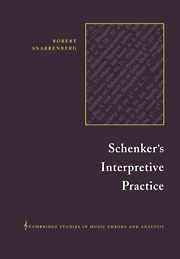3 - Synthesis
Published online by Cambridge University Press: 02 November 2009
Summary
What is the effect of a diminished fourth? Such a low-order effect ought to be easy to interpret: since its constituent tones cannot both belong to the same triad or even the same diatonic system, it is dissonant and has a transient effect. That much is taught by strict counterpoint. But now give the interval a place in the unfolding of a piece, in the company of a musical entity whose tones had hitherto formed a consonance. What, now, is the effect of this diminished fourth, now that it provokes a change of harmony within its companion entity?
Imagine the finale of Mozart's Symphony in G minor, which opens with the series of tones shown in example 3.1a. Within moments this series of tones is repeated, albeit within a different harmonic context (ex. 3.1b), and thereby becomes a motivic entity. For nearly two hundred bars and over thirty appearances, this motive appears only in configurations that project a single harmony in each of its two bars. But then, in bar 191 and only moments before it will be recapitulated in its original forms, Mozart alters it (ex. 3.2). The motive in play at this point extends the original by two bars with a step motion leading from the appoggiatura in the second bar to a pair of angular leaps, each of which spans a diminished fourth (see the brackets in ex. 3.2; some of the fourths are compounded or inverted).
- Type
- Chapter
- Information
- Schenker's Interpretive Practice , pp. 99 - 138Publisher: Cambridge University PressPrint publication year: 1997



